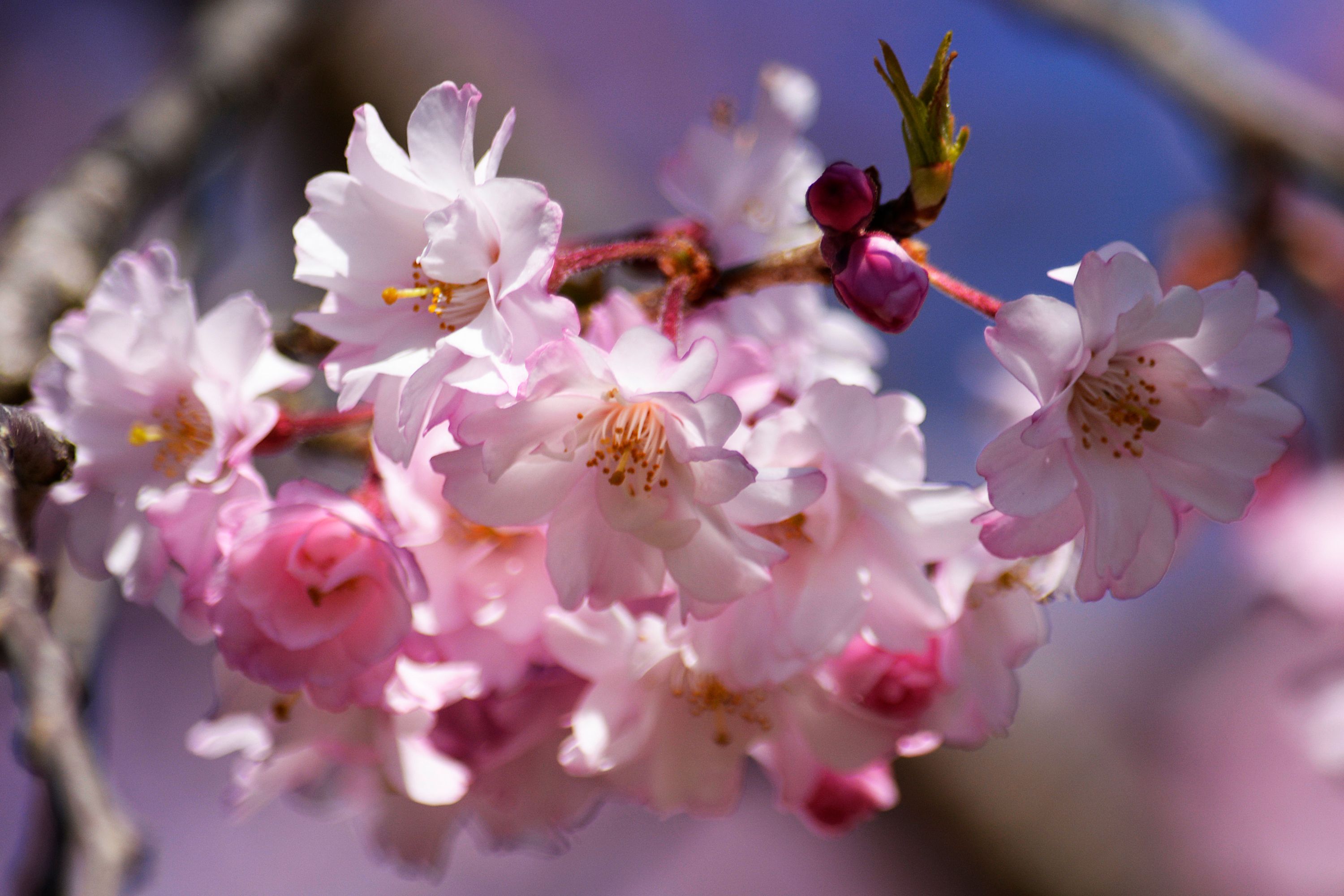Japanese cherry
(Prunus serrulata)

Description
Prunus serrulata, commonly known as Japanese cherry or sakura, is a species of flowering tree in the Rosaceae family. It is native to Japan, Korea, and China, and has been widely cultivated around the world for its ornamental value. Description and Characteristics Prunus serrulata is a deciduous tree that can grow up to 12-15 meters in height, with a trunk diameter of up to 1 meter. The bark of the tree is smooth and grayish-brown, with horizontal lenticels. The branches are slender and slightly drooping, and the leaves are oval-shaped, with serrated edges, and can grow up to 14cm in length. The flowers of Prunus serrulata are the tree's most striking feature. They are pink or white, and typically appear in clusters of 2-5 on short stalks. Each flower is composed of five petals and a central cluster of yellow stamens, and can be up to 5cm in diameter. The flowers bloom in spring, usually between March and May, depending on the climate. The fruit of Prunus serrulata is a small, round drupe that is around 1-2 cm in diameter. It is initially green, but turns yellow or red as it ripens. The fruit is not commonly eaten by humans, but is a valuable food source for birds and other wildlife. Cultivation Prunus serrulata is a popular ornamental tree in temperate climates around the world. It is commonly planted in parks, gardens, and along streets, and is also used in bonsai cultivation. The tree prefers well-drained soil and a sunny position, and is generally hardy to USDA zones 5-8. Propagation of Prunus serrulata is typically done through seed propagation or vegetative propagation. Seed propagation involves planting the cleaned, stratified seeds in a mixture of peat moss and sand, and then placing them in a cool, moist environment. Vegetative propagation involves taking cuttings from the tree and rooting them in a rooting hormone solution. Uses Prunus serrulata is primarily grown for its ornamental value, with its showy flowers making it a popular choice for landscaping. The tree is also important culturally in Japan, where it is celebrated during the annual hanami (cherry blossom viewing) festival. In addition to its ornamental value, Prunus serrulata has several other uses. The wood of the tree is used for furniture making, and the bark has been traditionally used in Chinese medicine to treat coughs and other respiratory ailments. Varieties There are many cultivars of Prunus serrulata, with variations in flower color, shape, and size. Some popular cultivars include: 'Kwanzan': a cultivar with double pink flowers and a vase-shaped habit. It is one of the most popular cultivars in the US. 'Shirotae' (also known as 'Mt. Fuji'): a cultivar with large, white flowers and a spreading habit. It is known for its strong, sweet fragrance. 'Ukon': a cultivar with double yellow flowers. It is a relatively rare cultivar that is highly prized by collectors. 'Kanzan': a cultivar with double pink flowers that bloom in early spring. It is known for its dense, rounded habit. 'Amanogawa': a cultivar with a narrow, columnar habit and pink flowers. It is commonly used in urban landscapes due to its small footprint. Conclusion Prunus serrulata, or Japanese cherry, is a beautiful and popular ornamental tree that is widely cultivated around the world.
Taxonomic tree:







